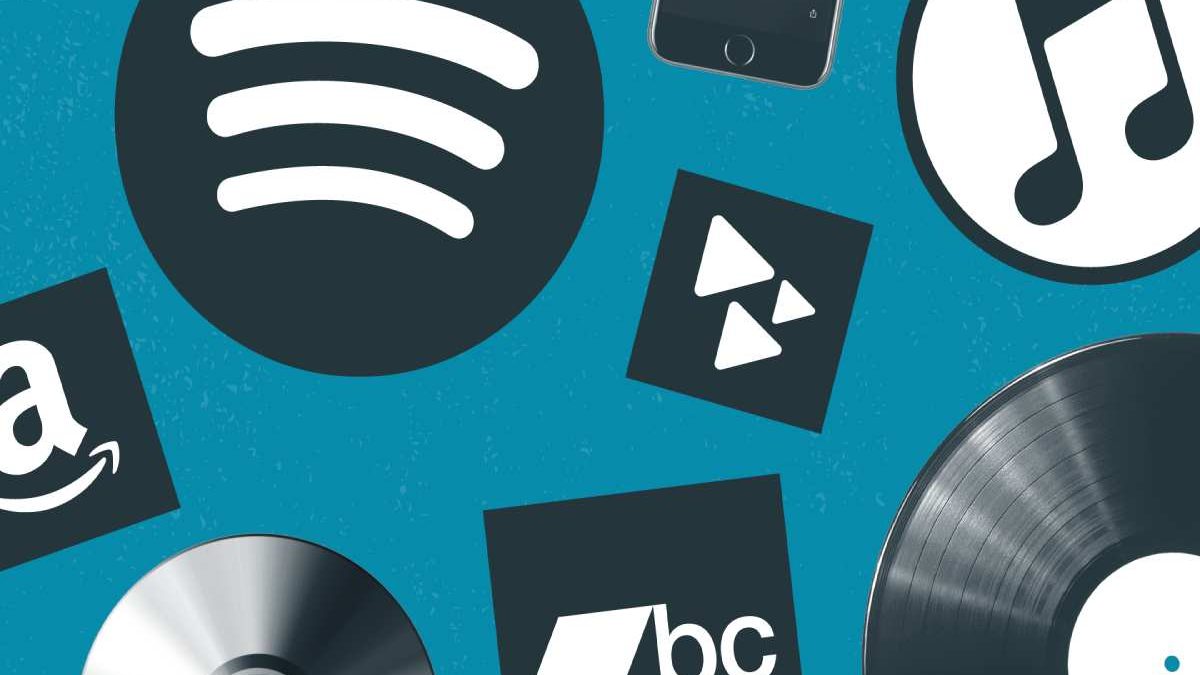Over the past few decades, music distribution has undergone a tremendous evolution. From vinyl records and cassettes to CDs, digital downloads, and streaming services, the way we consume music has changed dramatically.
Beginning with analog formats, music distribution has shifted to online platforms and streaming services, making music more accessible than ever before. Let’s track the evolution of music distribution from vinyl to viral.
Table of Contents
Spin the Record Around
The rise of vinyl records can be traced back to the 1940s when the first LPs were introduced. Vinyl records provided a high-quality sound that was unmatched by other formats, making it the most popular format for music lovers.
In the 1970s, the introduction of cassettes brought about a new era of portability, allowing people to take their music on the go. However, the sound quality of cassettes was not as good as vinyl records, and they were prone to wear and tear.
Compact Discs Arrive
The introduction of CDs in the 1980s revolutionized music distribution. CDs provided better sound quality than cassettes, and they were more durable. They were also smaller and easier to store than vinyl records, which made them more convenient for music lovers.
With the rise of the CD, music stores became a popular destination for music lovers, and the music industry experienced a significant boom.
Load Up the MP3
The advent of digital technology and the internet in the 1990s changed the way music was distributed. The introduction of MP3s and digital downloads provided a new way for music lovers to access their favorite songs.
With the rise of online music stores such as iTunes, music lovers no longer had to leave their homes to buy music. Instead, they could download their favorite songs with just a few clicks of a button.
In the early 2000s, music piracy became a significant issue as people began to share and download music illegally through file-sharing platforms such as Napster. This led to the decline of the music industry, as many record labels struggled to keep up with the changing landscape of music distribution.
However, in 2003, Apple launched the iTunes Music Store, which provided a legal and convenient way for music lovers to download music.
Unlimited Streaming
In recent years, music distribution has shifted once again to streaming services such as Spotify, Apple Music, and Tidal. Streaming services provide access to millions of songs at a low cost, making it easier than ever for music lovers to discover new music.
With the rise of streaming services, the music industry has experienced a resurgence, with record labels signing new artists and releasing new albums at a steady pace.
One of the most significant benefits of streaming services is the data they collect on their users’ listening habits. This data provides valuable insights into what people are listening to and how they are consuming music. Record labels can use this data to identify new trends and sign artists that fit into those trends, making it easier for them to predict what will be popular in the future.
Downsides of Digital
Despite the many benefits of streaming services, there are also some drawbacks. One of the biggest concerns is the amount of money artists receive from streaming services.
While streaming services pay a small amount for each stream, it is not enough to support many artists, particularly those who are just starting out. This has led to a debate about the fairness of streaming services and the need for a more equitable distribution of revenue.
Another concern is the impact of streaming services on the music industry as a whole. With the rise of streaming services, the traditional album format has become less important, and singles have become more popular. This has led to a shift in how record labels market and promote their artists, with a greater focus on singles and individual tracks rather than full-length albums.
Additionally, the ease of access provided by streaming services has led to a decline in physical album sales, such as CDs and vinyl records. While some music lovers still prefer physical formats, the convenience and affordability of streaming services have made them the preferred choice for many consumers.
What’s Next for the Industry?
Despite these challenges, the music industry continues to evolve and adapt to new technologies and distribution methods.
Many record labels have embraced streaming services as a way to reach new audiences and promote their artists, and streaming services have become an essential part of the music industry ecosystem.
Looking to the future, it is clear that music distribution will continue to evolve and change. As technology advances, new distribution methods will emerge, and the way we consume music will continue to evolve.

